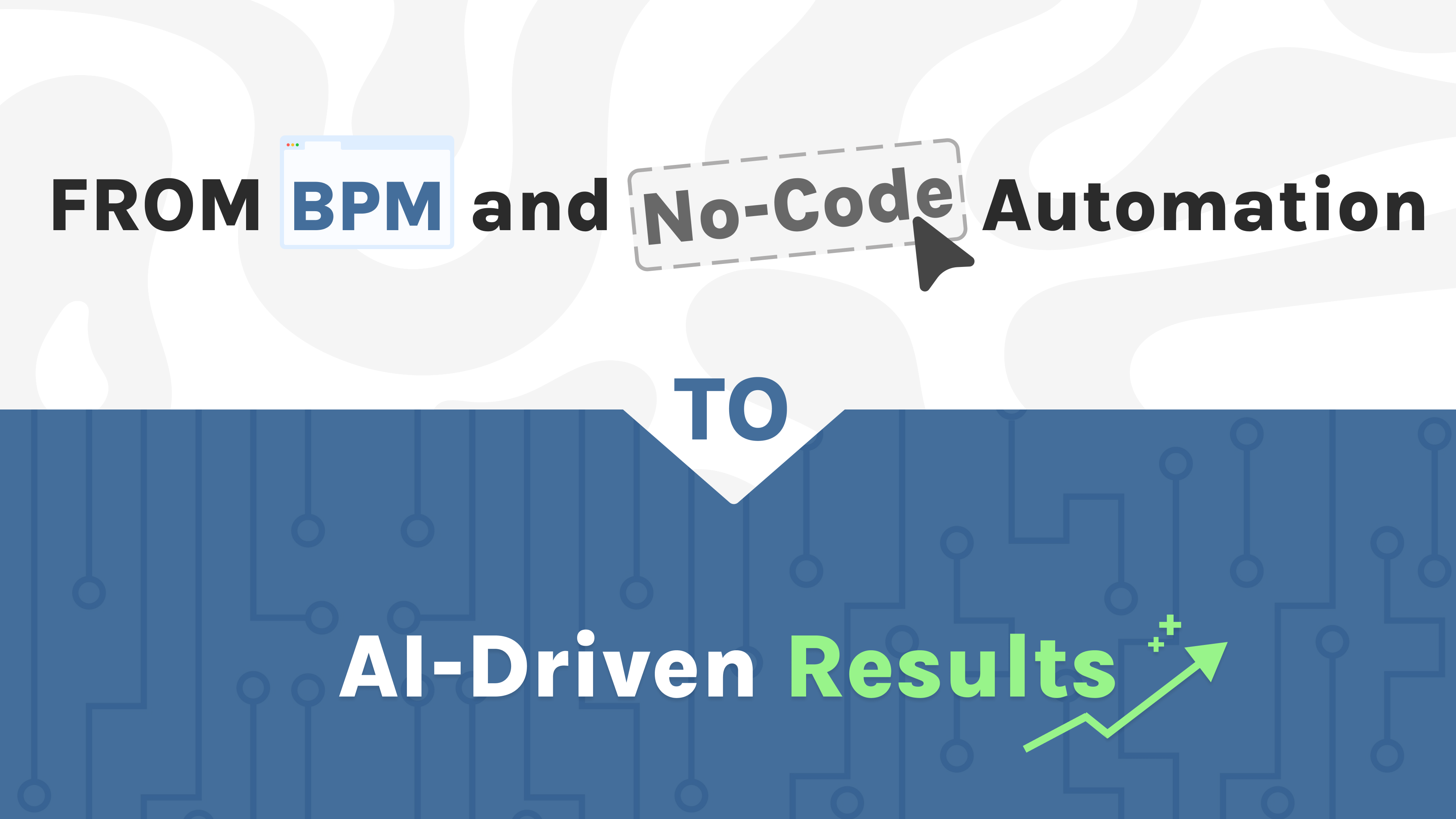
In the past decade, companies have relied on BPM (Business Process Management) platforms and no-code solutions to digitalize and automate their workflows. These platforms allowed organizations to map processes, configure steps, and define rules that guided users toward achieving desired outcomes. While this approach significantly improved efficiency, it still relied on humans to navigate the configured steps and produce the final result.
Today, a new wave of AI-driven platforms is transforming the very nature of workflow automation. Instead of just defining steps, artificial intelligence can generate results directly, leveraging predictive algorithms, natural language understanding, and advanced analytics. The question is no longer just how to get there, but how quickly and accurately the outcome can be produced automatically.
From Step-by-Step to Outcome-Driven Automation
Traditional BPM and no-code platforms excelled in structure and repeatability. Businesses could define:
- Sequential steps in a workflow.
- User interfaces and decision points for each step.
- Business rules and validations to ensure consistency.
Users would follow these defined steps to complete tasks, such as processing a customer request, approving an invoice, or generating a report. The value of these platforms was clear: faster, more reliable, and traceable processes.
However, even the most advanced BPM systems required manual navigation and input. The real breakthrough comes when AI is integrated: instead of merely guiding users through steps, AI can analyze data, predict outcomes, and produce the final result, sometimes without human intervention.
Vision App Maker: From Workflow Builder to Intelligent Orchestrator
Vision App Maker has been a powerful platform for digitizing workflows. It allows organizations to:
- Define workflow steps, user interfaces, and business rules.
- Enable users to follow structured processes to produce accurate outcomes.
- Integrate with other systems and data sources for seamless digital operations.
With the integration of AI and intelligent orchestration, Vision App Maker is evolving into a next-generation orchestrator. Instead of only defining steps for human users, the platform can now:
- Combine AI models and robots within a workflow.
- Automatically execute tasks based on data inputs and business rules.
- Produce the final result directly, reducing human intervention to monitoring and exception handling.
In practical terms, this means that tasks such as document processing, data analysis, and decision-making can now be fully automated within a single, orchestrated workflow. The platform acts as a conductor, coordinating AI agents, robotic process automation (RPA) bots, and human inputs to achieve faster, more accurate, and actionable results.
The Benefits of AI-Enhanced Workflow Orchestration
Organizations adopting this next-generation approach gain several advantages:
- Speed: Outcomes are generated faster, with minimal human intervention.
- Consistency: AI ensures uniform application of rules and logic across all processes.
- Scalability: Workflows can handle increased volumes without additional resources.
- Intelligence: Data-driven insights and predictive capabilities inform business decisions in real time.
By moving from a step-based BPM model to an AI-driven outcome model, businesses can focus less on managing processes and more on driving results, innovation, and value.
A Glimpse Into the Future
The evolution of Vision App Maker reflects the broader trend in enterprise software: from workflow automation to intelligent orchestration. As AI continues to mature, platforms will not just assist users — they will produce results, combining human expertise, robotic automation, and predictive intelligence.
For businesses, this shift means that workflows are no longer just a sequence of tasks — they become dynamic, intelligent processes that adapt, learn, and deliver outcomes autonomously.
Conclusion
Vision App Maker demonstrates that digitalization is not just about efficiency; it is about transforming how work gets done. By combining no-code workflows, RPA, and AI, organizations can automate entire processes, produce results faster, and focus human effort on strategic decision-making and innovation.
